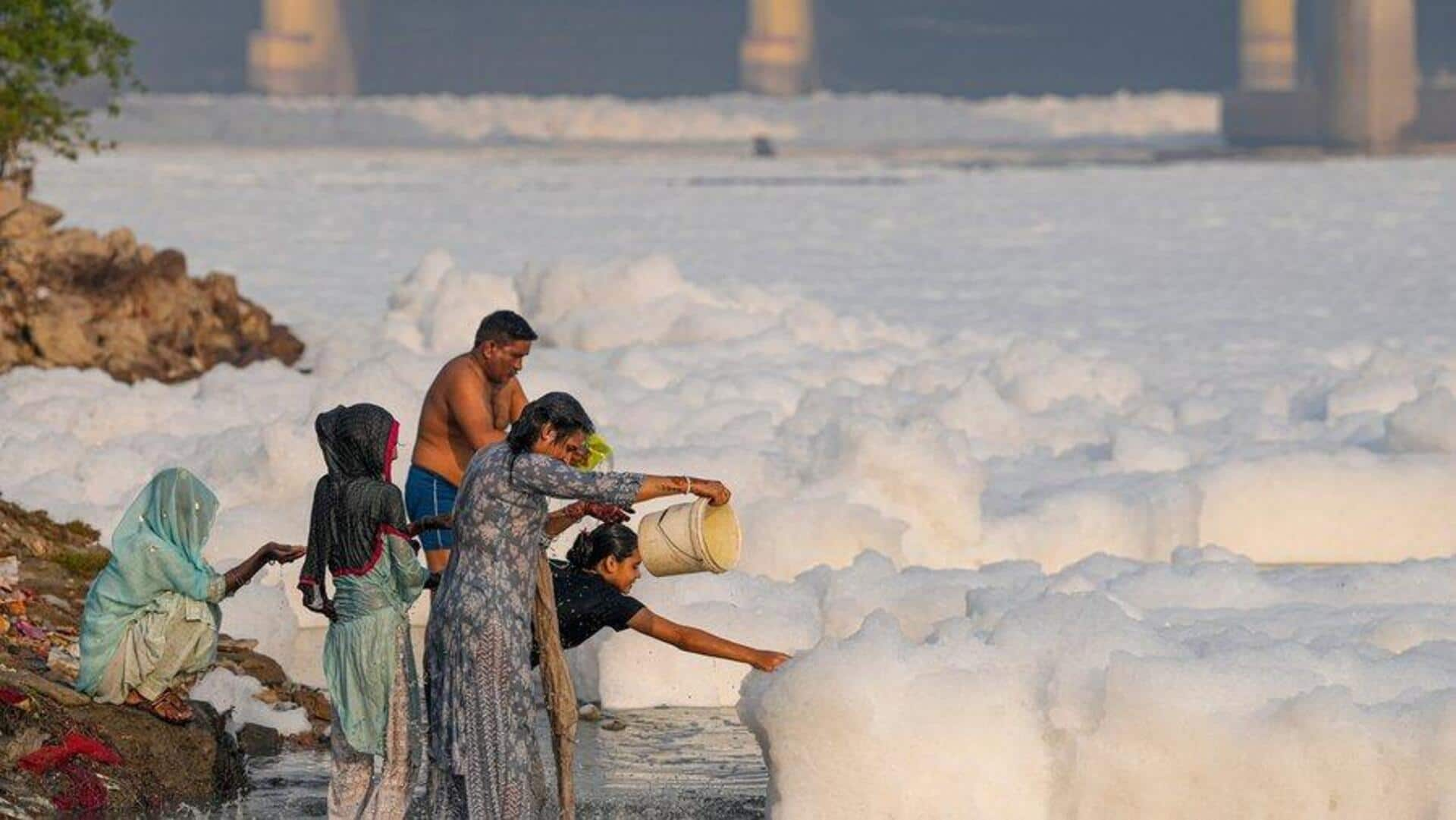
How dangerous are the white foam floating in Yamuna river
What's the story
A thick coating of foam has returned to parts of the Yamuna River as Delhi battles an acrid haze that has descended over the city. The froth is a cocktail of sewage and industrial waste, filled with high levels of ammonia and phosphates, which can cause respiratory and skin problems. The frothing and foaming of river water is primarily caused by the release of inadequately treated or entirely untreated sewage.
why-does-it-matter
Why it's more severe during winter
Although foaming is a common occurrence at different times of the year, it is more prevalent during this particular season. This is primarily due to two factors: the river's lean phase and the low water flow. These factors prevent the pollutants from being diluted, and their accumulation results in the appearance of froth on the water surface. This toxic froth can result in a wide range of complications when exposed.
Diseases
What happens if you consume the water
According to experts, such exposure can lead to skin allergies, irritation, and many types of skin pigmentation. Individuals with a family history of autoimmune diseases, such as diabetes and thyroid disease, could experience these conditions earlier. Additionally, the industrial contaminants present in the water could trigger vitiligo, cause hair fall, conjunctivitis, among others. Cancer expert Dr. Anshuman Kumar said if this water is swallowed, these chemicals can cause serious damage to the lungs and lead to gastrointestinal problems.
Twitter Post
Visuals of the sacred river
“If farmers are criticized for the pollution caused by stubble burning, why is there no similar outrage toward industrialists responsible for discharging around 44 million liters of effluent into the Yamuna River each day?
— Rattan Dhillon (@ShivrattanDhil1) October 17, 2024
It’s as if no one holds them accountable.” pic.twitter.com/tngU3FjSAs
Pollution share
Delhi's contribution to Yamuna river pollution
The Yamuna River, a Ganges tributary, stretches 1376km from the Himalayas through several states. Although only 2% of its length flows through Delhi, the city contributes to nearly 76% of the river's total pollution. This disproportionate contribution is due to Delhi's dense population and high waste levels. Shockingly, villagers downstream still use this toxic water for bathing and drinking purposes.
Pollution forecast
Delhi's air quality deteriorates, stubble burning to worsen situation
To rub salt to the wound, the city's air quality has been worsening with the arrival of winter. On Saturday morning, areas such as Anand Vihar and Akshardham recorded an Air Quality Index (AQI) of 334, falling under the "very poor" category. Other areas such as India Gate and AIIMS recorded AQIs under the "poor" category. The first stage of the Graded Response Action Plan (GRAP) restrictions was imposed on October 15 amid deteriorating air quality.